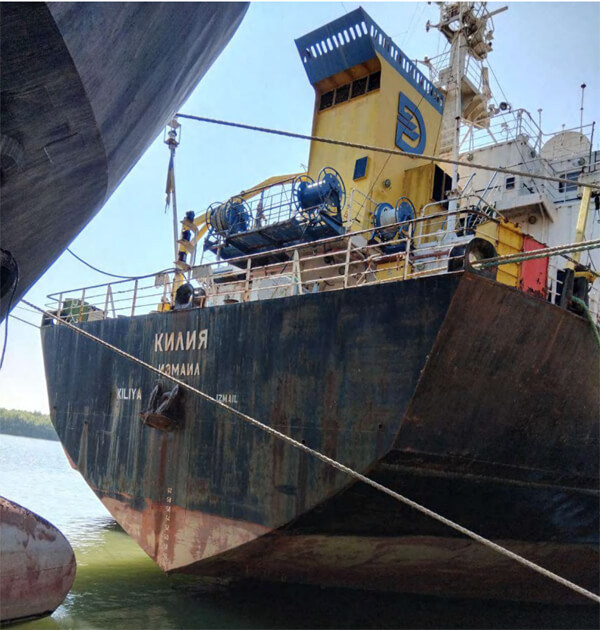Doug Watt won't forget the sound of a tailings pond collapsing at the Mount Polley Mine more than 10 years ago, sending millions of cubic metres of waste into waterways in the British Columbia Interior. “I went outside, and you could hear the roar.
Nono Shen and Darryl Greer, The Canadian Press

Doug Watt won't forget the sound of a tailings pond collapsing at the Mount Polley Mine more than 10 years ago, sending millions of cubic metres of waste into waterways in the British Columbia Interior.
“I went outside, and you could hear the roar. It was like standing close to Niagara Falls,” the 74-year-old said in an interview Tuesday.
Fifteen federal Fisheries Act charges have been laid against Imperial Metals Corp. and two other firms after the dam collapse at the gold and copper mine in what would become one of the largest environmental disasters in provincial history.
Watt said he and other residents in Likely, B.C., the closest community to the dam, are pleased charges have been laid and now “only time will tell whether they actually get found guilty or not.”
“We're always wondering all the time, are they going to walk away with no accountability for what happened?" he said.
The earthen dam gave way at 1 a.m. on Aug. 4, 2014, sending about 25 million cubic meters of mining waste, including tailings and other materials, into nearby waterways.
A statement from the B.C. Conservation Officer Service issued Tuesday said it worked with the Department of Fisheries and Environment and Climate Change Canada to investigate possible contraventions of the act.
The indictment filed in B.C. Supreme Court on Dec. 6 outlines the charges against Imperial Metals, its subsidiary, Mount Polley Mining and Wood Canada Ltd., an engineering firm.
The indictment alleges the companies allowed a "deleterious substance" from the mine's tailings pond into several bodies of water "frequented by fish," including Polley Lake, Hazeltine Creek, Bootjack Creek, Edney Creek and Quesnel Lake.
It alleges the companies' work "resulted in serious harm to fish that are part of a commercial, recreational or Aboriginal fishery … namely the death of fish or any permanent alteration to, or destruction of, fish habitat.”
Imperial Metals said in a statement the company received the indictment this week, and as the matter is before the courts it won't be making further comment.
A report from an independent expert panel released in 2015 concluded the key reason for the dam's failure was its design.
It said the engineers didn't take into account the complexity of the geological environment in relation to the dam embankment foundation.
It said engineers failed to recognize that the dam was "susceptible to undrained failure" when subject to the stresses associated with the embankment.
A three-year deadline for provincial charges in the case passed in 2017.
A spokesman for B.C.'s Ministry of Environment referred questions to the Conservation Officer Service's statement and said there would be no further comment "as it’s before the courts."
In 2022, Engineers and Geoscientists B.C., the provincial regulatory and licensing body, fined two former project engineers a combined $226,500, while a third was temporarily suspended and ordered to complete additional training.
A post from August on the Mount Polley Mine website says more than $70 million has been invested in environmental repair and clean-up efforts, "demonstrating a strong commitment to restoring the affected areas."
In September 2023, the Mount Polley Mining Corp. was awarded the Jake McDonald Reclamation Award for its habitat remediation work in Hazeltine Creek and adjacent areas.
The company said in its post that ongoing environmental monitoring has shown steady recovery, and its efforts will ensure the long-term health of the ecosystem in the area.
Jamie Kneen, a spokesman with Mining Watch Canada, said the Mount Polley spill left “devastating environmental impacts,” including potential damage to the salmon runs in the Fraser River.
“There's the physical destruction of 25 million cubic meters of material ripping down Hazelton Creek and into Quesnel Lake,” said Kneen.
He said there are still many questions left unanswered, such as whether contamination from the spill is still active in Quesnel Lake.
“Aside from seeing these charges actually brought forward, our major concern is still the ongoing contamination,” said Kneen.
“What we don't know — and there isn't really enough study being done on it — is what the consequences are for the fisheries, or for the salmon runs, and part of that is that those are very complicated systems to study. But also there's not that much investigation being done to try and sort that out."
Even 10 years later, Watt said he doesn't drink the lake water because he has safety concerns.
“We've lived here for like 27 years or more, and we knew what the lake was like before this accident happened, and we see that it deteriorated,” he said.
The offences under the Fisheries Act listed in the indictment carry fines between $500,000 and $6,000,000.
Individuals guilty of an offence under the act can be imprisoned for up to three years if they are convicted for a second time, however only companies face charges in connection to the dam's collapse.
The Conservation Officer Service said Mount Polley Mining Corp. and Wood Canada Ltd. face the same charges and all three companies are due to make a court appearance on Dec. 18.
This report by The Canadian Press was first published Dec. 10, 2024.
Nono Shen and Darryl Greer, The Canadian Press











